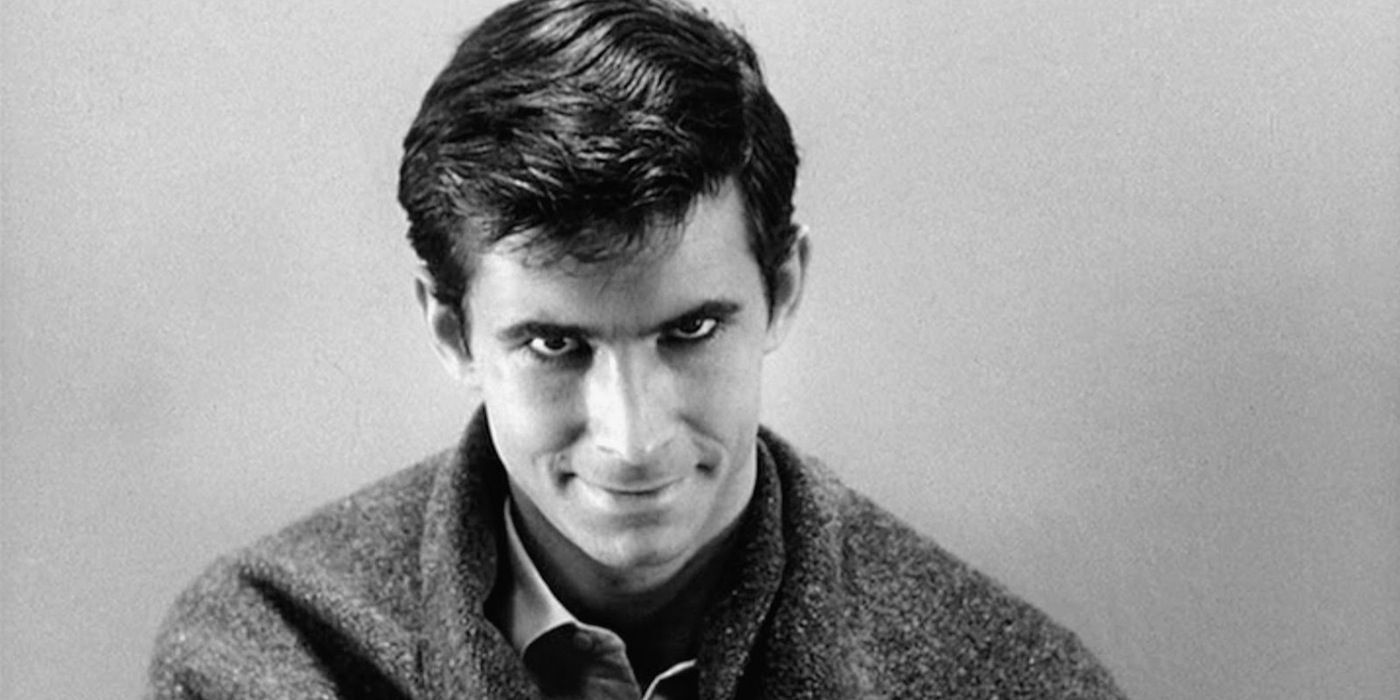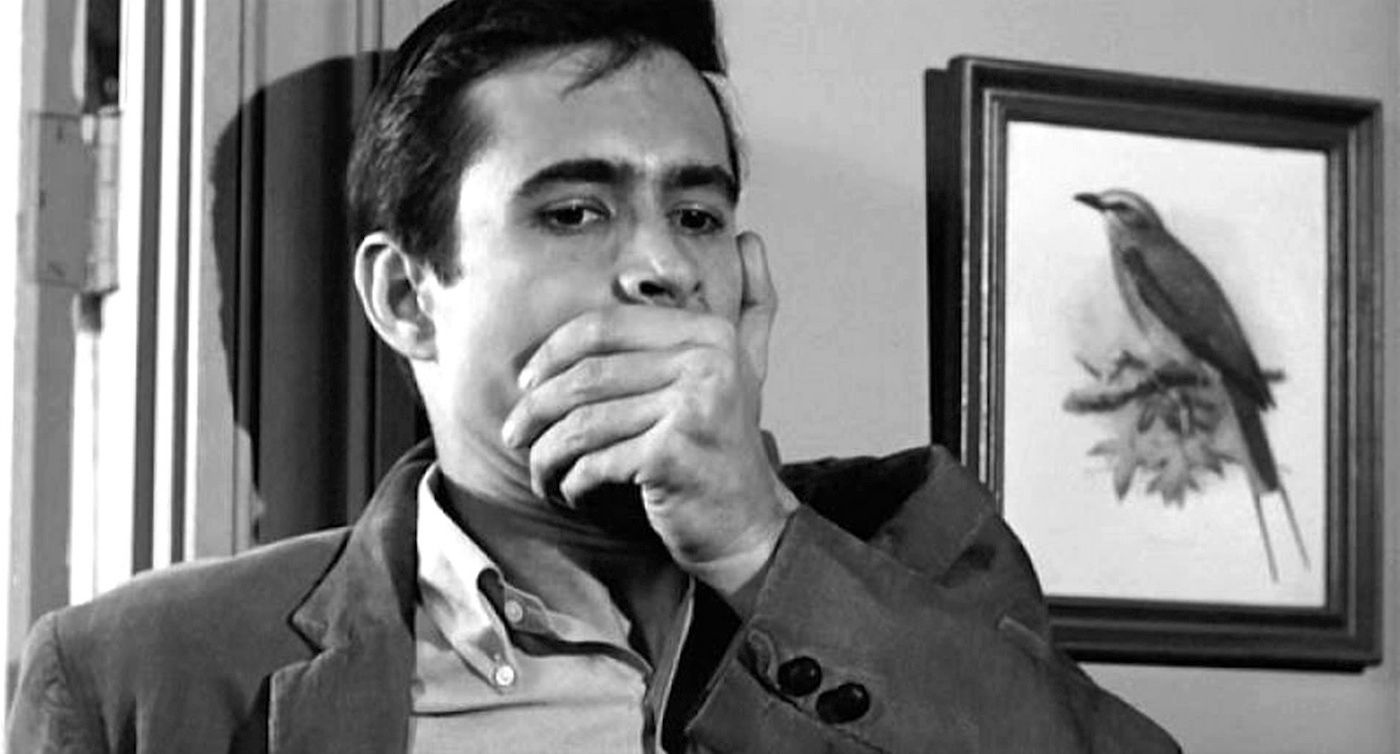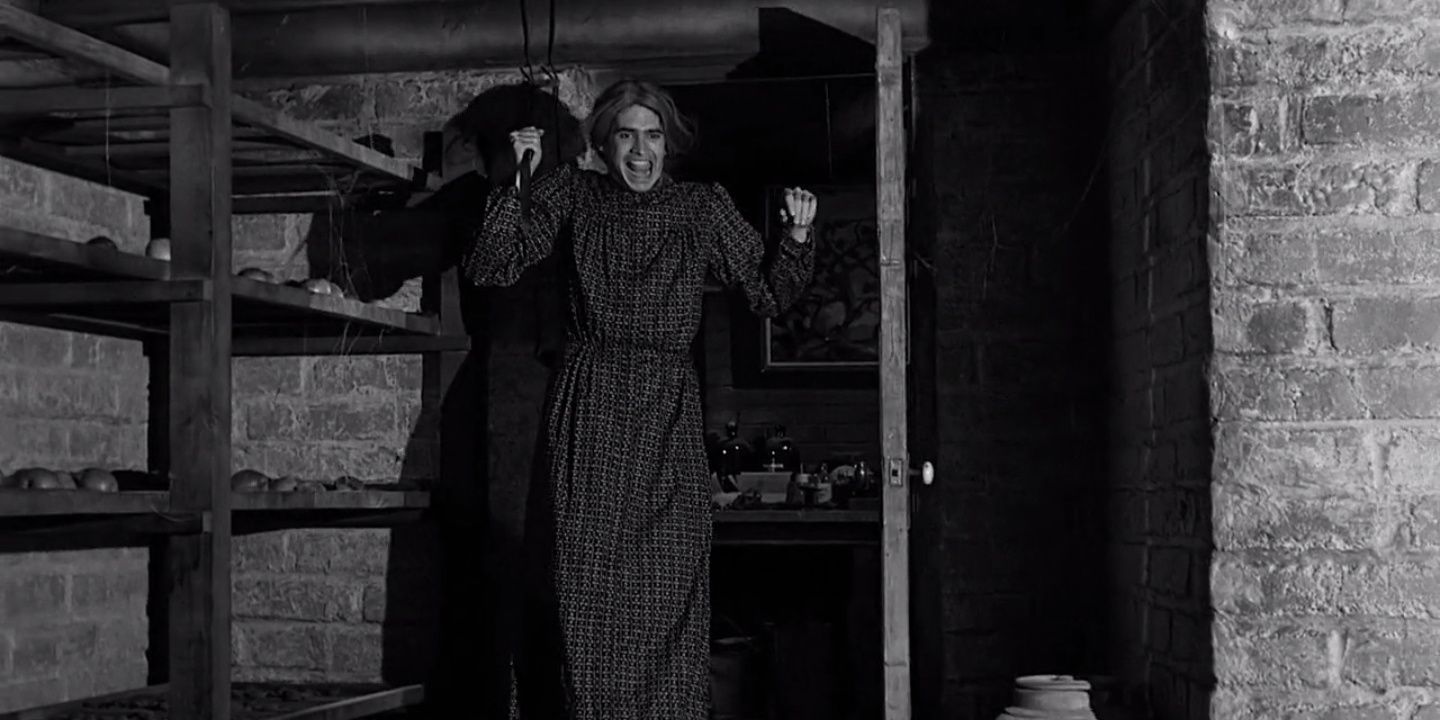Director Alfred Hitchcock's classic 1960 thriller Psycho contains one of the best and most famous twist endings of all time, and we examine it in detail. Hitchcock's resume is stacked with incredible films, but Psycho might just be his most famous, and probably the one even people who don't generally watch older horror movies are most likely to have seen. This is partially due to Psycho spawning a franchise, with Anthony Perkins returning to play Norman Bates in three sequels. Psycho has also had a more recent pop culture presence thanks to A&E's acclaimed series Bates Motel.
Psycho in many ways serves as a sort of precursor to the slasher film sub-genre, focusing as it does on a series of murders committed at the Bates Motel, by an assailant that's unknown to the audience until the end of the film. Lots of early slashers chose to keep their killers a mystery until the final act of the movie, such as the original Friday the 13th, Sleepaway Camp, and Happy Birthday to Me.
While it's true that the basics of Psycho's ending are known to most via pop cultural osmosis, it can't be overstated just how revolutionary some of its concepts were at the time. Hitchcock even famously ordered theaters not to let viewers in after the start of the film, in order to preserve its twists.
Psycho Ending Explained: Norman Bates Is Really the Killer
One change Hitchcock made when adapting Robert Bloch's novel Psycho into a movie was to make Norman Bates more sympathetic and appealing. Hitchcock cast young up-and-comer Anthony Perkins in the role, then known for playing wholesome, likeable characters. Perkins imbued Norman with a warmth and shyness that made audiences at the time never suspect him as the killer. Of course, while Norman's unstable "mother" is presented as the murderer, it's revealed near the end that Norman is himself the killer, and the one who hacked up Marion Crane (Janet Leigh) in the shower during Psycho's most famous scene, as well as sent a wounded Detective Arbogast down the stairs. Well, Norman killed them physically anyway, mentally is a completely different story.
Psycho Ending Explained: Norman Bates Has Two Distinct Personas
While it was Norman Bates' hand clutching the murder weapon during Mother's kills, as far as he knows, it's not his fault. As explained at length by a psychiatrist in Psycho's conclusion, Norman isn't simply putting on his deceased mother's clothes and killing people, he has an entire second persona in which he truly believes himself to be his mother. This used to be referred to as having "multiple personalities," but is today clinically known as Dissociative Identity Disorder. Unfortunately, the Mother identity becomes more dominant over time, to the point where Norman himself seems completely gone by the end. As later films would reveal, this was due to emotionally and physically abusive behavior by Norma Bates, who cultivated a quasi-incestuous relationship with her son, and made him feel guilty for experiencing sexual feelings. Thus, when Norman gets turned on, he can't cope, and Mother emerges to murder the object of his desire, such as Marion.



